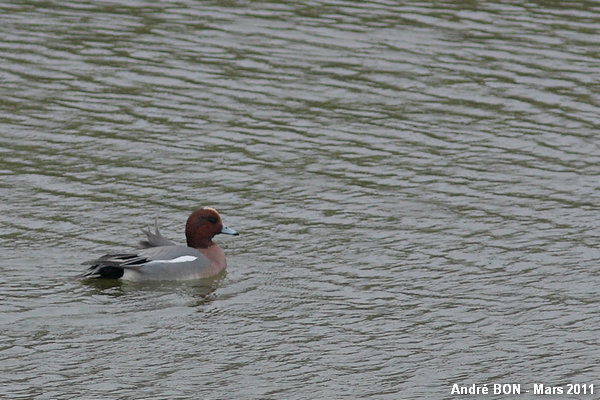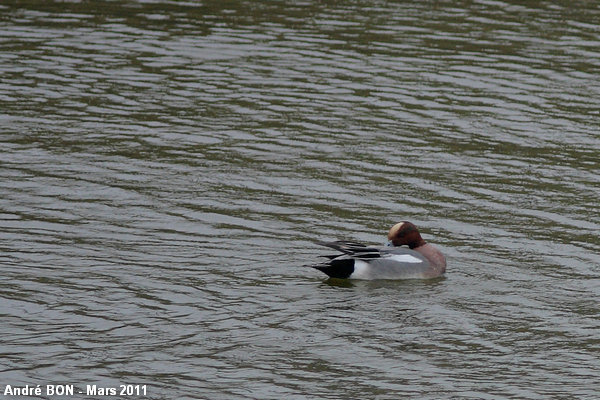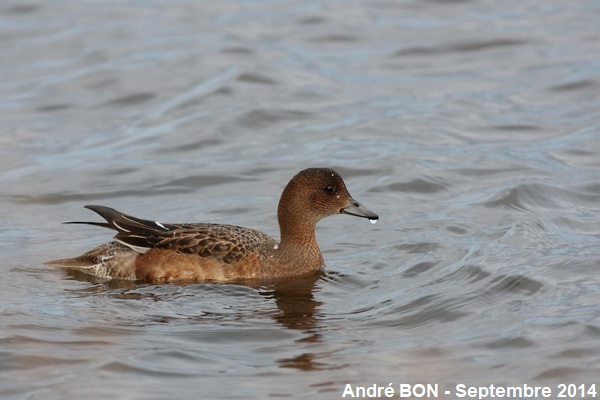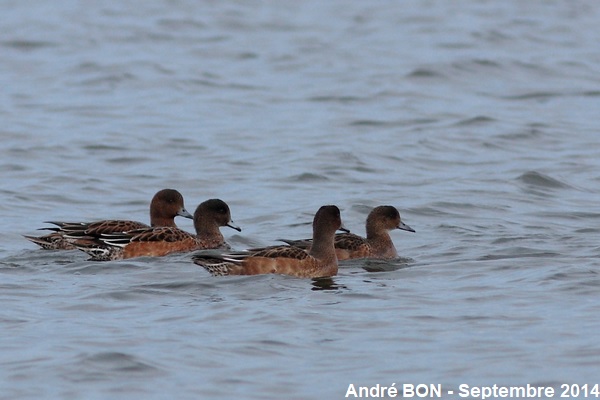



| Eurasian Wigeon (Anas penelope (Linnaeus, 1758)) |




|
|
Scientific name: Anas penelope (Linnaeus, 1758) Common name: Eurasian Wigeon French name: Canard siffleur, Canard siffleur d'Europe. Order: Anseriformes Family: Anatidae Size: Body size: 45 to 51 cm; Weight: 500 to 900 g; Wingspan: 75 to 86 cm. Habitat: Bays, estuaries and beaches on sea coasts, marshes, rivers, lakes and cultivated fields inland. It goes to damp meadows and areas with dense vegetation during the breeding season. Food: Water and terrestrial plants, water and terrestrial insects. It can also feed by filtering water with its bill. Nesting: The nest is built on the ground, at a place rather far from water, among high grasses. There are generally from 7 to 10 eggs per brood. Migration: The Eurasian Wigeon leaves the Arctic regions, late summer, to winter in southern Europe, southern Asia or North Africa. Geographic area: Arctic regions north of Eurasia in summer, from southern England, to Mediterranean Europe or North Africa in winter, and in southern Asia too. |
You can recognize the Eurasian Wigeon by its brown head with a yellow crown. The upper side of the body is a metallic grey colour, the chest is pink and the belly is white. The tail is mainly black. The bill is grey with a black tip. There is a white wing bar. The female is almost totally dull brown with some grey on the tail. In eclipse plumage, the male is similar to the female. Its yellow crown disappears. The Eurasian Wigeon has a typical call, some kind of a two-noted whistle. There is also the American Widgeon (Anas americana). The male, in nuptial plumage shows a green feather mask around its eyes. Its whistle is three-noted. The female is very similar to the Eurasian Wigeon's female. |
| [To know more about the Eurasian Wigeon] [Next picture] [Top] |

|
I did not know the Eurasian Wigeon before this observation and I have first thought that I was observing one diving duck species of the Aythya genus. I have seen again this duck a little further. It was busy grazing on the channel bank among Brant Geese and Common Coots. |
| [To know more about the Eurasian Wigeon] [Next picture] [Previous picture] [Top] |

|
I have not shot very nice pictures under this grey and rainy weather. I have kept this one because you can clearly see the large yellow crown on the upper side of the head. |
| [To know more about the Eurasian Wigeon] [Next picture] [Previous picture] [Top] |

|
After one male here is one female. |
| [To know more about the Eurasian Wigeon] [Previous picture] [Top] |

|
There were numerous female Eurasian Wigeons swimming on the Mývatn lake. |